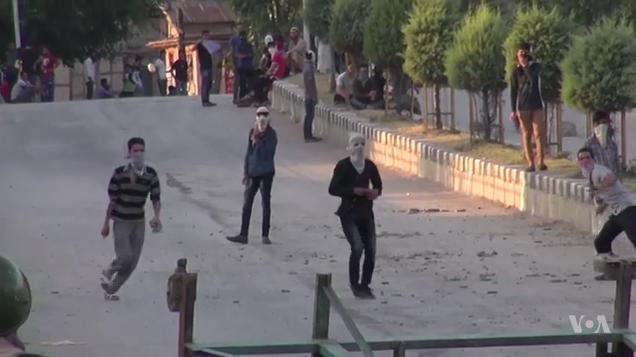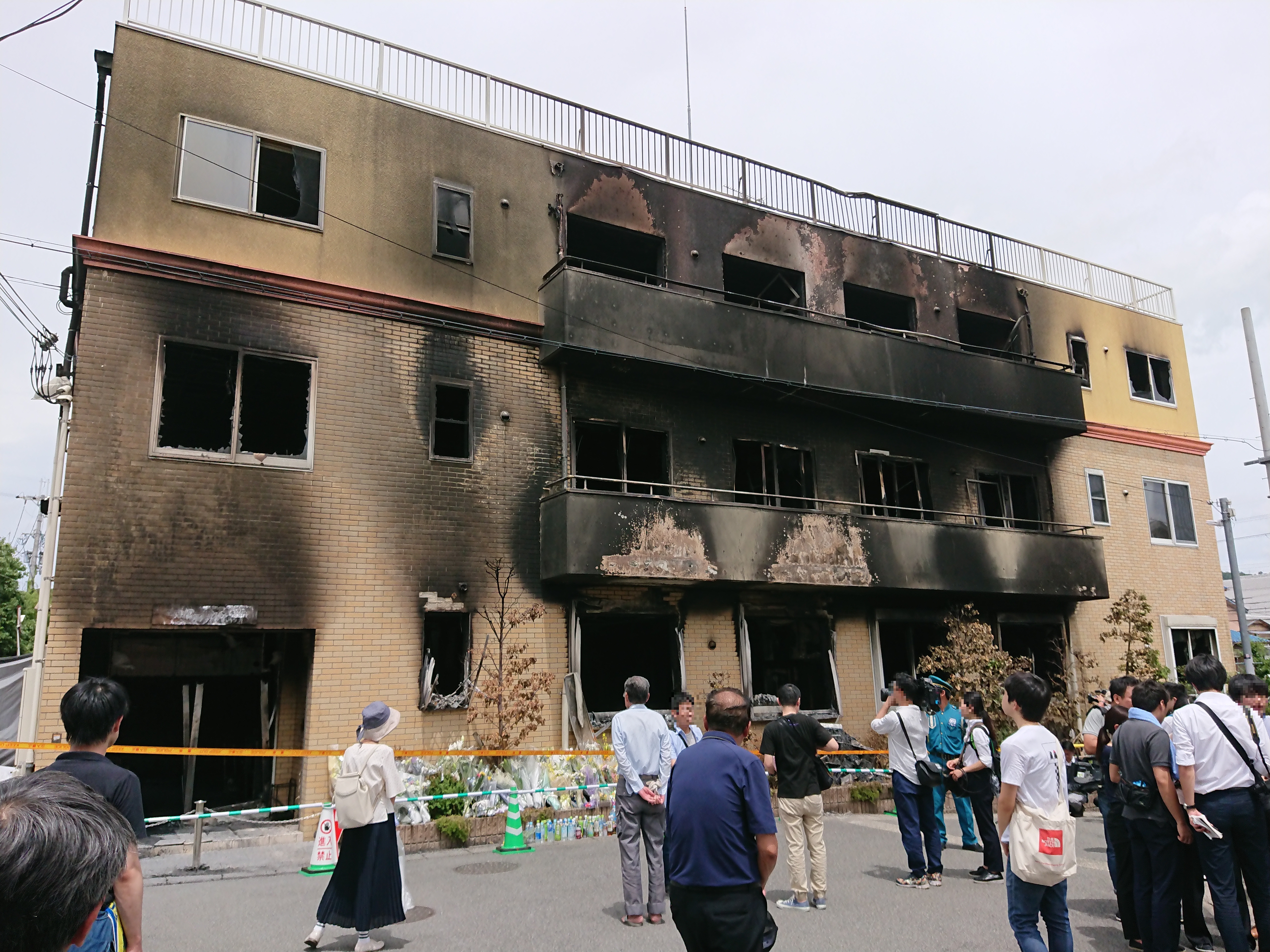|
Citizenship Amendment Act Protests
The Citizenship Amendment Act (Bill) protests, also known as the CAA Protest, CAB Protest or CAA and NRC protests, occurred after the Citizenship Amendment Act (CAA) was enacted by the Government of India on 12 December 2019. The move sparked a widespread national and overseas ongoing protests against the act and its associated proposals of the National Register of Citizens (NRC). The protests first began in Assam and spread swiftly in other states such as Delhi, Meghalaya, Arunachal Pradesh, and Tripura on 4 December 2019. Protests broke out rapidly across the country, although the concerns of the protesters vary., Quote: "Though the protesters in India share a common opposition to the new citizenship law, their reasons for rejecting the legislation vary." The CAA amends the Indian citizenship act to accept illegal migrants who are Hindu, Sikh, Jain, Parsi, Buddhist, and Christian from Afghanistan, Bangladesh and Pakistan, and who entered India before 2014, following the rel ... [...More Info...] [...Related Items...] OR: [Wikipedia] [Google] [Baidu] |
Citizenship (Amendment) Act, 2019
The Citizenship (Amendment) Act, 2019 was passed by the Parliament of India on 11 December 2019. It amended the Citizenship Act, 1955 by providing a pathway to Indian citizenship for persecuted religious minorities from Afghanistan, Bangladesh and Pakistan who are Hindus, Sikhs, Buddhists, Jains, Parsis or Christians, and arrived in India before the end of December 2014.Citizenship Amendment Bill: India's new 'anti-Muslim' law explained , BBC News, 11 December 2019. The law does not grant such eligibility to from these countries. The act ... [...More Info...] [...Related Items...] OR: [Wikipedia] [Google] [Baidu] |
Civil Disobedience
Civil disobedience is the active, professed refusal of a citizen to obey certain laws, demands, orders or commands of a government A government is the system or group of people governing an organized community, generally a state. In the case of its broad associative definition, government normally consists of legislature, executive, and judiciary. Government ... (or any other authority). By some definitions, civil disobedience has to be nonviolent to be called "civil". Hence, civil disobedience is sometimes equated with peaceful protests or nonviolent resistance. Henry David Thoreau's essay ''Resistance to Civil Government'', published posthumously as ''Civil Disobedience (Thoreau), Civil Disobedience'', popularized the term in the US, although the concept itself has been practiced longer before. It has inspired leaders such as Susan B. Anthony of the U.S. women's suffrage movement in the late 1800s, Saad Zaghloul in the 1910s culminating in Egyptian Revol ... [...More Info...] [...Related Items...] OR: [Wikipedia] [Google] [Baidu] |
Mass Shooting
There is a lack of consensus on how to define a mass shooting. Most terms define a minimum of three or four victims of gun violence (not including the shooter or in an inner city) in a short period of time, although an Australian study from 2006 required a minimum of five; and added a requirement that the victims actually died as opposed to being shot and injured but not necessarily killed. In the United States, the ''Investigative Assistance for Violent Crimes Act of 2012'' defines mass killings as three or more killings in a single incident, however the Act does not define mass shootings. Media outlets such as CNN and some crime violence research groups such as the Gun Violence Archive define mass shootings as involving "two or more shot (injured or killed) in a single incident, at the same general time and location, not including the shooter". Mother Jones defines mass shootings as indiscriminate rampages killing three or more people, excluding the perpetrator; this definit ... [...More Info...] [...Related Items...] OR: [Wikipedia] [Google] [Baidu] |
Bandh
Bandh (Devanagari: बंद) (literally: shutting down) is a form of protest used by political activists in South Asian countries such as India and Nepal. It is similar to a general strike. During a bandh, a political party or a community declare a general strike. For example, a ''Bharat bandh'' is a call for a bandh across India, and a bandh can also be called for an individual state or municipality. The community or political party declaring a bandh expects the general public to stay at home and not report for work. Shopkeepers are expected to keep their shops closed, and public transport operators are expected to stay off the road. There have been instances when large cities have been brought to a standstill. A bandh is a form of civil disobedience. Ban The Supreme Court of India banned bandhs in 1998, [...More Info...] [...Related Items...] OR: [Wikipedia] [Google] [Baidu] |
General Strike
A general strike refers to a strike action in which participants cease all economic activity, such as working, to strengthen the bargaining position of a trade union or achieve a common social or political goal. They are organised by large coalitions of political, social, and labour organizations and may also include rallies, marches, boycotts, civil disobedience, non-payment of taxes, and other forms of direct or indirect action. Additionally, general strikes might exclude care workers, such as teachers, doctors, and nurses. Historically, the term general strike has referred primarily to solidarity action, which is a multi-sector strike that is organised by trade unions who strike together in order to force pressure on employers to begin negotiations or offer more favourable terms to the strikers; though not all strikers may have a material interest in the negotiations, they all have a material interest in maintaining and strengthening the collective efficacy of strikes as a ... [...More Info...] [...Related Items...] OR: [Wikipedia] [Google] [Baidu] |
Hashtag Activism
Hashtag activism refers to the use of Twitter's hashtags for Internet activism. The hashtag, has become one of the many ways that social media contributes to civic engagement and social movements. The use of the hashtag on social media provides users with an opportunity to share information and opinions about social issues in a way that others (followers) can interact and engage as part of a larger conversation with the potential to create change. The hashtag itself consists of a word or phrase that is connected to a social or political issue, and fosters a place where discourse can occur. Social media, provides an important platform for historically marginalized populations. Through the use of hashtags these groups are able to communicate, mobilize, and advocate for issues less visible to the mainstream. Supporters of the power of hashtag activism believe that it allows users to connect with individuals from all over the world and share information quickly. Critics, on the other ... [...More Info...] [...Related Items...] OR: [Wikipedia] [Google] [Baidu] |
Stone Pelting
Stone throwing or rock throwing, when it is directed at another person (called stone pelting in India), is often considered a form of criminal battery. History The throwing of rocks or stones is one of the most ancient forms of ranged-weapon combat, with stone-throwing slings found among other weapons in the tomb of Tutankhamen, who died about 1325 BC. Xenophon mentions in his Hellenica the petrobóloi ( grc, πετροβόλοι), and Thucydides in the History of the Peloponnesian War and Dio Cassius in his Histories mention the lithobóloi ( grc, λιθοβόλοι), both meaning stone-throwers in Greek, as army units. De re militari (Latin "Concerning Military Matters") by the Roman writer Publius Flavius Vegetius Renatus details Roman soldiers training to throw stones as weapons. "Recruits are to be taught the art of throwing stones both with the hand and sling." And "Formerly all soldiers were trained to the practice of throwing stones of a pound weight with the han ... [...More Info...] [...Related Items...] OR: [Wikipedia] [Google] [Baidu] |
Arsons
Arson is the crime of willfully and deliberately setting fire to or charring property. Although the act of arson typically involves buildings, the term can also refer to the intentional burning of other things, such as motor vehicles, watercraft, or forests. The crime is typically classified as a felony, with instances involving a greater degree of risk to human life or property carrying a stricter penalty. Arson which results in death can be further prosecuted as manslaughter or murder. A common motive for arson is to commit insurance fraud. In such cases, a person destroys their own property by burning it and then lies about the cause in order to collect against their insurance policy. A person who commits arson is referred to as an arsonist, or a serial arsonist if arson has been committed several times. Arsonists normally use an accelerant (such as gasoline or kerosene) to ignite, propel and directionalize fires, and the detection and identification of ignitable liquid ... [...More Info...] [...Related Items...] OR: [Wikipedia] [Google] [Baidu] |
Vandalism
Vandalism is the action involving deliberate destruction of or damage to public or private property. The term includes property damage, such as graffiti and #Defacement, defacement directed towards any property without permission of the owner. The term finds its roots in an Age of Enlightenment, Enlightenment view that the Germanic Vandals were a uniquely destructive people. Etymology The Vandals, an ancient Germanic people, are associated with senseless destruction as a result of their Sack of Rome (455), sack of Rome under King Genseric in 455. During the Age of Enlightenment, Enlightenment, Rome was idealized, while the Goths and Vandals were blamed for its destruction. The Vandals may not have been any more destructive than other invaders of ancient times, but they did inspire English poet John Dryden to write, ''Till Goths, and Vandals, a rude Northern race, Did all the matchless Monuments deface'' (1694). However, the Vandals did intentionally damage statues, which ma ... [...More Info...] [...Related Items...] OR: [Wikipedia] [Google] [Baidu] |
Hartal
Hartal () is a term in many Indian languages for a strike action that was first used during the Indian independence movement (also known as the nationalist movement) of the early 20th century. A hartal is a mass protest, often involving a total shutdown of workplaces, offices, shops, and courts of law, and a form of civil disobedience similar to a labour strike. In addition to being a general strike, it involves the voluntary closure of schools and places of business. It is a mode of appealing to the sympathies of a government to reverse an unpopular or unacceptable decision. A hartal is often used for political reasons, for example by an opposition party protesting against a governmental policy or action. The term comes from Gujarati (, or ), signifying the closing down of shops and warehouses with the goal of satisfying a demand. Mahatma Gandhi, who hailed from Gujarat, used the term to refer to his pro-independence general strikes, effectively institutionalizing the term. H ... [...More Info...] [...Related Items...] OR: [Wikipedia] [Google] [Baidu] |
Satyagraha
Satyagraha ( sa, सत्याग्रह; ''satya'': "truth", ''āgraha'': "insistence" or "holding firmly to"), or "holding firmly to truth",' or "truth force", is a particular form of nonviolent resistance or civil resistance. Someone who practises ''satyagraha'' is a satyagrahi. The term ''satyagraha'' was coined and developed by Mahatma Gandhi (1869–1948), who practised satyagraha in the Indian independence movement and also during his earlier struggles in South Africa for Indian rights. Satyagraha theory influenced Martin Luther King Jr.'s and James Bevel's campaigns during the Civil Rights Movement in the United States, as well as Nelson Mandela's struggle against apartheid in South Africa and many other social justice and similar movements. Origin and meaning of name The terms originated in a competition in the news-sheet '' Indian Opinion'' in South Africa in 1906. Mr. Maganlal Gandhi, grandson of an uncle of Mahatma Gandhi, came up with the word "Sadagr ... [...More Info...] [...Related Items...] OR: [Wikipedia] [Google] [Baidu] |
Hunger Strikes
A hunger strike is a method of non-violent resistance in which participants fast as an act of political protest, or to provoke a feeling of guilt in others, usually with the objective to achieve a specific goal, such as a policy change. Most hunger strikers will take liquids but not solid food. In cases where an entity (usually the state) has or is able to obtain custody of the hunger striker (such as a prisoner), the hunger strike is often terminated by the custodial entity through the use of force-feeding. Early history Fasting was used as a method of protesting injustice in pre-Christian Ireland, where it was known as ''Troscadh'' or ''Cealachan''. Detailed in the contemporary civic codes, it had specific rules by which it could be used. The fast was often carried out on the doorstep of the home of the offender. Scholars speculate that this was due to the high importance the culture placed on hospitality. Allowing a person to die at one's doorstep, for a wrong of which on ... [...More Info...] [...Related Items...] OR: [Wikipedia] [Google] [Baidu] |






